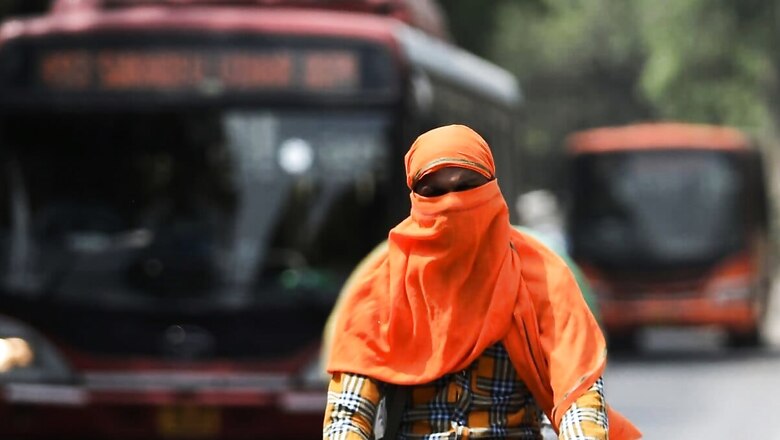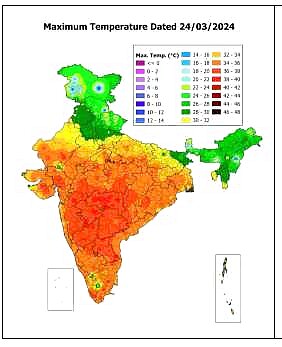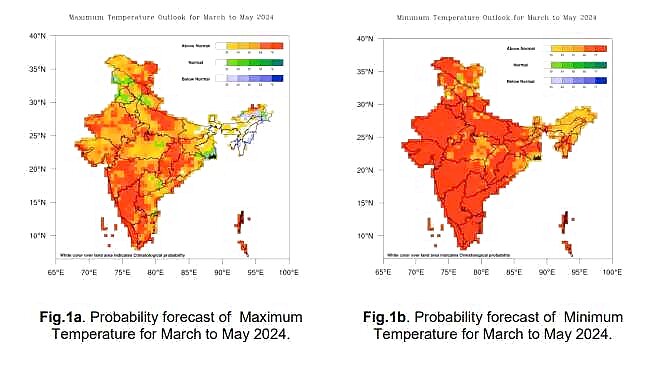
views
The MeT has forecast a higher number of intense heatwave days this summer. Day temperatures are already in the range of 36 to 40 degrees Celsius over southern peninsular states, including Andhra Pradesh, Telangana, Karnataka, Kerala and Tamil Nadu, as well as Rajasthan, Madhya Pradesh, Gujarat and Maharashtra. This shot up to 41.7 degrees Celsius in the Rayalaseema region and 41.6 degrees Celsius in Bhuj, which is the highest in March so far.

“The temperatures are rising, but there have not been any heatwaves this March, except for one or two days in Saurashtra-Kutch. But the southern states are bearing the brunt of extreme heat stress more this time due to humidity. The temperatures shot up in February, and have remained higher than usual. We have given hot and humid warnings for states like Kerala for the next five days,” said Dr Naresh Kumar, senior meteorologist at the IMD Delhi.
Global warming is fuelling the intensity of heatwaves, which are also increasing in frequency, duration and covering a larger area. However, the pattern of occurrence of heatwaves differs each year.
Unlike last year, when the Indo-Gangetic plains were gripped by an early onset of heatwaves, it is the southern peninsular states that are bearing the brunt this time. The mercury is settling around 30 to 35 degrees Celsius for plains of northwest India. Delhi recorded its highest maximum temperature this March at 34.6 degrees Celsius on Tuesday (March 26), which was three notches above normal.

The heatwaves lasted for as many as nine days in April with no breaks in between in the rice-growing states of Bihar and West Bengal, which were worst-hit last summer. The east-central states – Bihar, Jharkhand, Chhattisgarh, Telangana, coastal Andhra Pradesh, Odisha and eastern Uttar Pradesh, sweltered under the heatwave for as many as 14 days in June, and 19 days for West Bengal.
April 2022 was the hottest-ever on record for northwest India, with record-breaking heatwaves that impacted crop yields due to their unusually early onset in March. This time, too, temperatures have shot up in February for the southern peninsula that recorded its hottest-ever February in 123 years.
“There are lessons to be learnt from the unprecedented heatwaves over the past two years. The goal is not just to protect lives, but livelihoods, and plan early so the requisite steps can be taken in time,” says Abhiyant Tiwari, lead climate resilience and health, NRDC India.
The India Meteorological Department (IMD) declares a heatwave when the maximum temperature crosses 40 degrees Celsius in plains, 36 degrees Celsius in coastal areas, and 30 degrees Celsius in hilly states for two stations in a meteorological subdivision for two consecutive days at least. But, the heat stress can become deadly even before that, if it is coupled with a rise in humidity levels.
“The high humidity is adding to the discomfort, and we have already started issuing ‘hot and humid’ warnings,” said S Stella, head of IMD in Amravati.
The weather department has also started issuing experimental heat indices for the country, which will consider the impact of humidity along with the temperature, and indicate if it is on the higher side causing discomfort. However, it is not based on local thresholds or validated for India yet.















Comments
0 comment